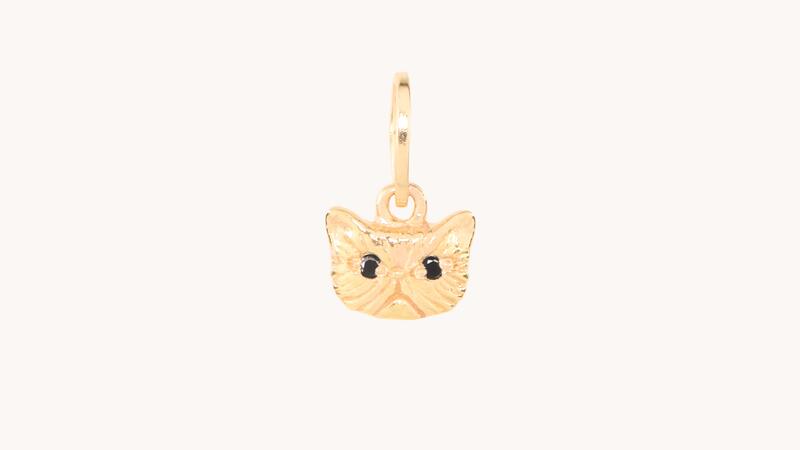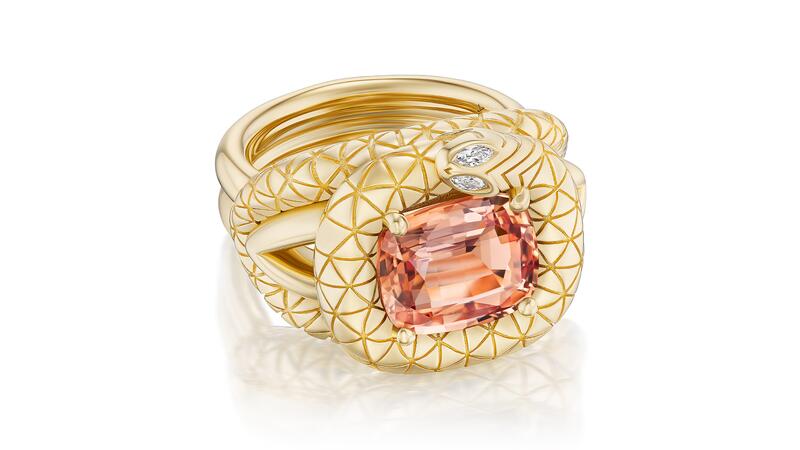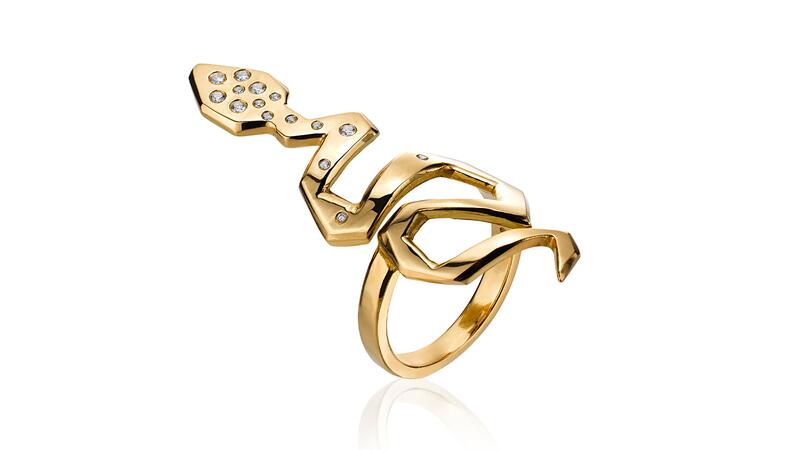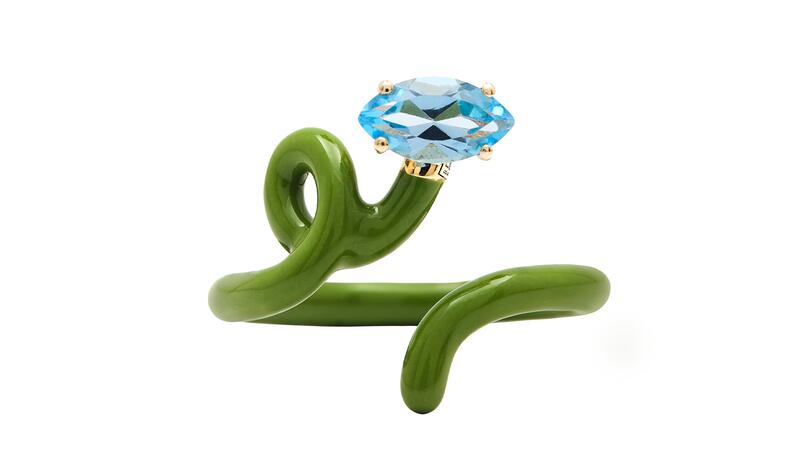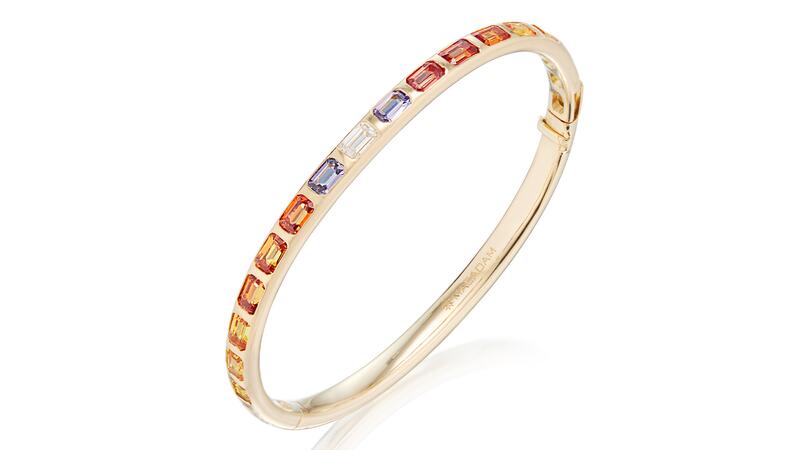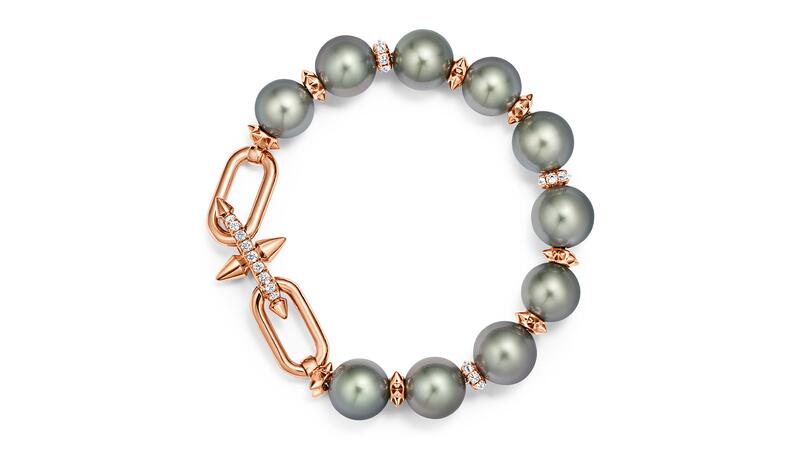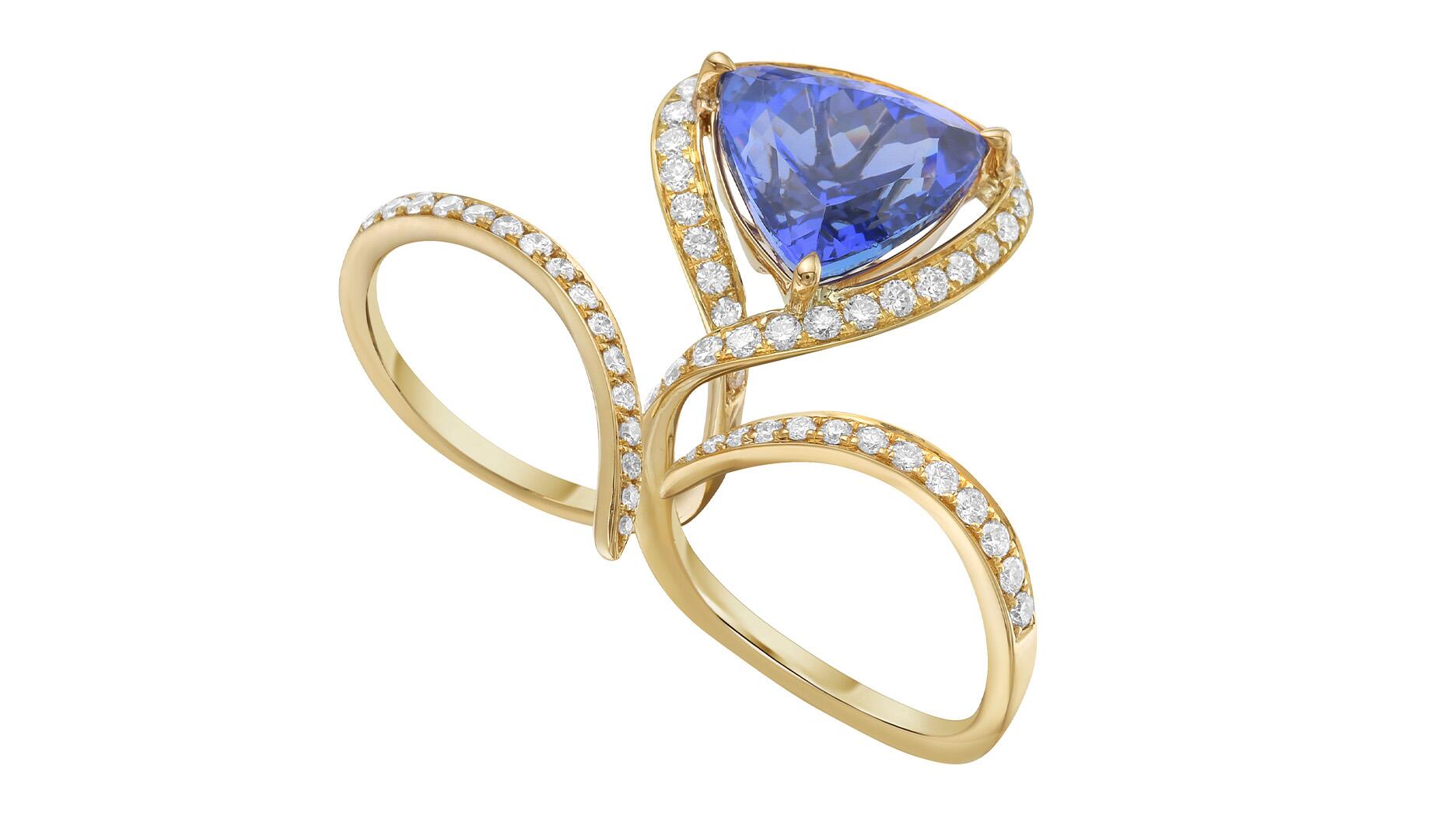State of Jewelry Design: The Top 10 Jewelry Trends of the Past Decade
As a nod to the theme of JCK Las Vegas 2025, “Decades,” National Jeweler took a look back at the top 10 jewelry trends of the past 10 years.

A lot has changed from 2015 to 2025.
Recounting the top 10 jewelry trends from this dynamic period in history is not only nostalgic but also a way to gather insight on what may resurface in the trend cycle next.
Since the theme of JCK Las Vegas is “Decades,” looking back at the top jewelry trends of the most recent decade is even more timely.
From 2015 to 2025, trends didn’t rise in popularity simply because consumers wanted to wear what everyone else had on. Instead, they gravitated to designs that told their story and showed their personality.
“I hear it more and more where designers will call themselves ‘storytellers,’ that they’re embedding their pieces with meaning,” says Bella Neyman, co-founder of NYC Jewelry Week.
“It’s not something new, but I don’t think it’s ever really been talked about in fine jewelry before. It’s coming more to the forefront of people’s minds than it was beforehand.”
From minimalism to bold styles, personalization, unisex pieces, and layered looks that tell a story, here are the top 10 trends from the last decade, according to experts in the industry.
1. Teeny Tiny Pieces
Minimalism was at the forefront of everyone’s minds at the beginning of the last decade. Thin chains, small studs, and barely there rings took over starting in 2015 and 2016.
When it came to adorning the body with jewels, it was all about delicate diamonds and micro pavé.
“Jewelry that is like, blink and you’ll miss it,” is how Neyman describes it.
Minimalist pieces are small and delicate, highlighting the wearer’s natural features rather than overshadowing them.
The bold, layered looks that are prevalent today were virtually unheard of at this time, as people chose to adorn themselves with only a few dainty pieces.
Neyman credits Catbird as a brand who aced this trend, while designer Wing Yau, founder of Wwake, also was at the forefront of the tiny jewelry movement, all the while championing sustainability.
While minimalism may not be at the top of the trend cycle in 2025, it still has its devotees.
Sophie Bille Brahe is a designer known for minimalistic pieces, and her eponymous brand is thriving.
Bille Brahe opened her first U.S. store in New York City in November 2024, and she was one of the three creators nominated for a Gem Award in the jewelry design category this year.
“I don’t want to say [minimalism has] subsided, but I think we’re not seeing it as much now. We are very much in that bolder [era] and that always goes back and forth,” Neyman says.
“We’re much more interested right now in standing out and showing our personality and using jewelry for that.”
2. The Bigger the Better
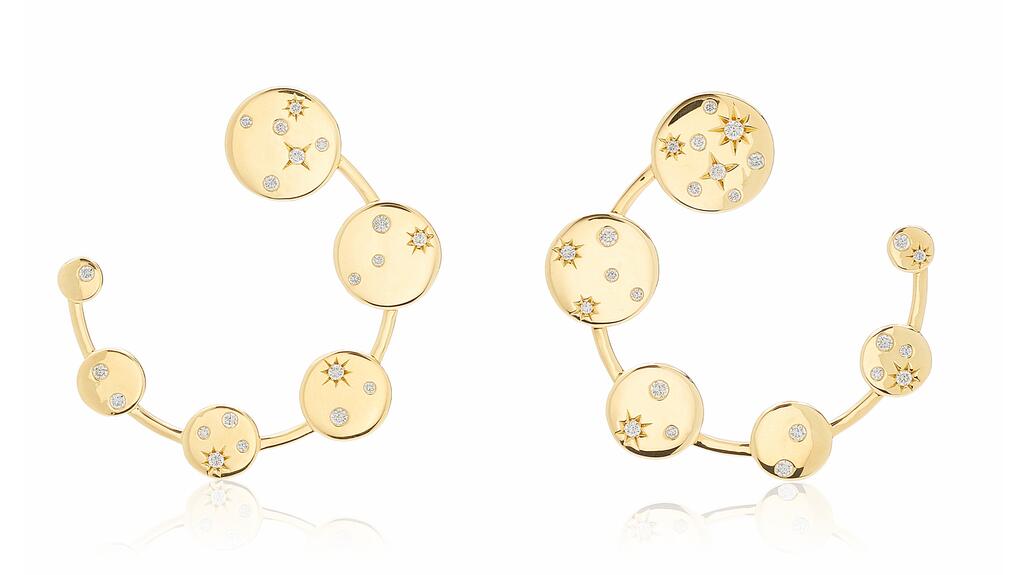
As the decade continued, the mania of minimalism gave way to a desire for bold styles, particularly after the way we interacted changed completely in March 2020.
While statement pieces never really go out of style, during the last decade they hit their peak in the early 2020s, according to designer Malyia McNaughton, CEO of Made By Malyia.
When COVID-19 made time stand still and changed everyone’s lives, people could only connect with the outside world virtually.
Zoom calls replaced in-person meetings and larger, bolder pieces became the preference because they were easier to see on a computer or smartphone screen.
Small studs and tiny pendants were virtually invisible, so it took a substantial piece to make an everyday statement.
“I see [bolder pieces] more now because people are favoring chunkier stones and chunkier settings, things that really have a nice weight to them, a certain, dare I say, voluptuousness to them,” Neyman says.
The chunky gold statement pieces of the ‘80s and ‘90s have returned with a modern spin. Think large earrings (door knockers, anyone?), oversized cuffs, and chunky gold chains.
Bold styles are making a mark on the bridal market as well, with chunky bands expected to be on-trend for engagement rings in 2025.
3. Personalization

Personalization in jewelry is not new—people have been using jewelry to tell stories about themselves for thousands of years—but it materialized in a multitude of different ways throughout the last decade.
“Using your jewelry to express who you are … to call it a trend is really interesting because this is something that probably each decade can speak to a little bit,” Neyman says.
Initial necklaces, nameplate necklaces, and sentimental numeral pendants popped up with a new spin on their design.
“One of the biggest trends [are] initial necklaces,” says Amanda Gizzi, director of public relations and events at Jewelers of America, who notes 2019 as the style’s peak.
Initial necklaces are a classic, derived from the nameplate necklaces of the 1980s and even farther back in time. They came to the forefront again in early 2015 with designers like the late Alex Woo, who made lowercase initial necklaces in silver and gold.
As the decade wore on, the style blew up, literally, transforming into bold bubble fonts through brands such as Brent Neale and Alison Lou.
Initial necklaces offer the customer a piece that feels their own without truly customizing it. They allow retailers to bring in clients for pieces that seem personal and unique.
“Personalization, in that way, is something I saw really emerge and become something that people were clamoring for, wanting to make a statement through a piece that no one else has and if they do have it, it doesn’t mean the same thing that it means for them,” McNaughton says.
Bespoke jewelry is not new either, but it is gaining more traction as people look for jewelry that has a deeper meaning and personalization to it.
“One-of-a-kinds are gearing up to be the next big thing,” says Randi Molofsky, founder of For Future Reference, a brand development agency.
“Instead of everyone wanting the same status piece, I think the new status will be all about bespoke.”
4. Tattooing with Permanent Jewelry
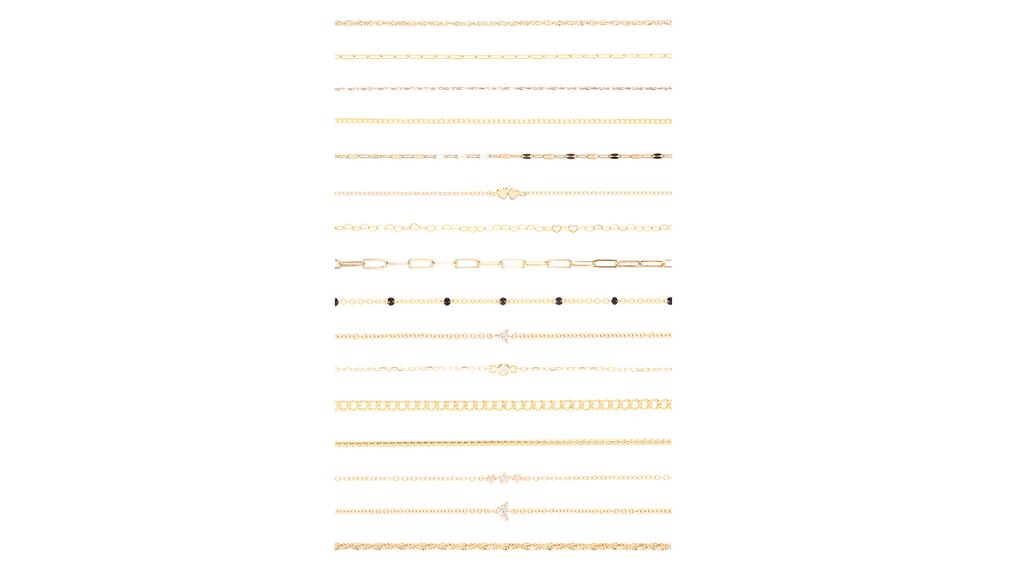
Jewelry became a new way to tattoo starting around 2016.
It has become an event to get a piece of jewelry permanently welded around one’s wrist or ankle, giving the piece the story consumers are still craving and offering retailers the chance to turn their store into an experience.
“[Permanent jewelry] completely changed people’s perception of what jewelry needed to be and how it could be a fun thing for people to do together. It became experiential and a special way for people to have those special moments with their loved ones,” Gizzi says.
Chains are welded into bracelets, anklets, and even rings—despite the last option not necessarily being a permanent piece—rather than having to deal with a clasp on a piece of jewelry consumers know they don't want to take off.
Even though these pieces are meant to be worn forever, they can be removed, if needed, and welded back on again.
Consumers typically choose one or two chains as their “jewelry tattoo” and then layer them with non-permanent pieces as a way to change their look.
5. Layering (AKA the #neckmess)
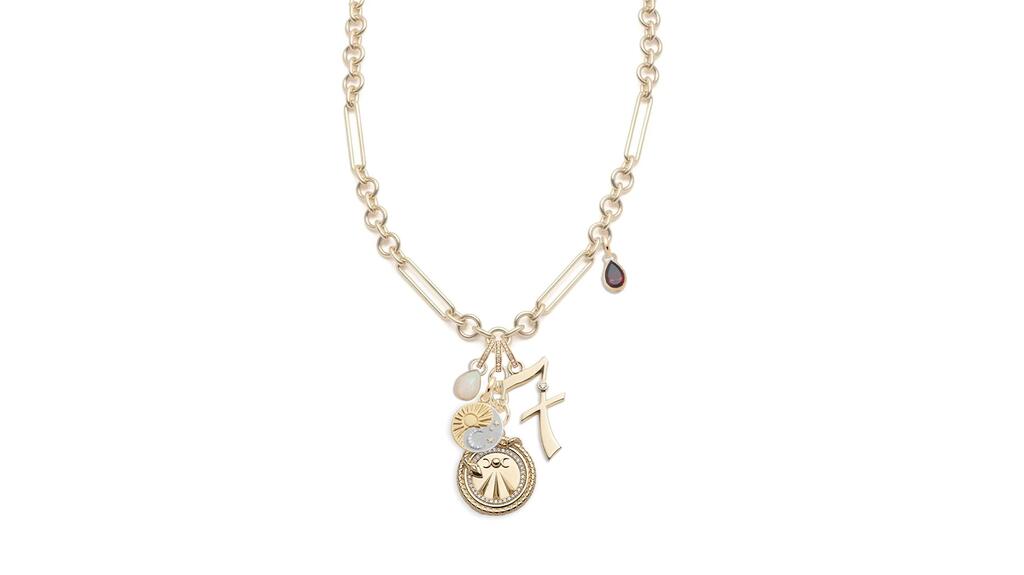
Hey, remember when hashtags were a thing?
We do, and we also remember when the #neckmess had us in a stranglehold.
Credited to designer Jessica Kagan Cushman circa 2016, the slang term-turned-hashtag referred to the trend of layering on as many necklaces as humanly possible.
Layering necklaces continued to be a macro trend into 2020 and through 2022 as they were the style that was most visible on Zoom.
“Rings might not have been as popular because everybody was wearing gloves and working from home; you couldn’t see what was happening by the keyboard,” Neyman explains.
The “neck mess” had people highlighting their décolletage with gold chain link necklaces of all different widths and a collection of pendants.
It allowed for a bold statement to be made while being dressed down, as everyone was working from home.
With the uncertainty surrounding COVID-19, people also were searching for any way to protect themselves, and talismans—in the form of charms, pendants, and medallions—included amid the neck mess helped pacify their fears.
“It makes you go out into the world holding your head up high. It’s something that protects you,” says Neyman, who points to the evil eye as an example of a symbol that is believed to guard its wearer from negative energy.
“We all wanted something to put on our bodies that can bring us inner peace and that would protect us as we ventured into this world that was a little bit unknown.”
Foundrae was (and still is) a brand to look to, as designer Beth Hutchens, who launched her company in 2015 and won the Gem Award for Jewelry Design in 2025, focuses on charms and sentimental jewelry that her clients can create their own stories with, says Molofsky.
Gizzi describes the necklace layering trend as “the charm bracelets of the decade.”
6. The Curated ‘Ear Story’
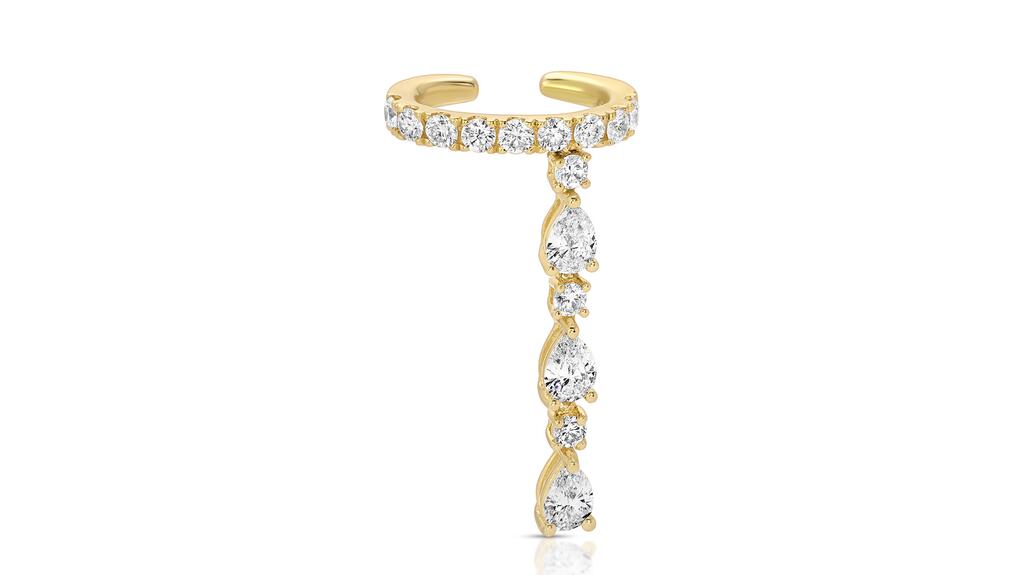
Having multiple ear piercings isn’t new but, like tattoos, they’ve become more mainstream in the last decade.
The idea of crafting a story around the fine jewelry one wears on their ears really began picking up steam in 2018.
The popularity of the “ear story” reached new heights during the pandemic because again, earrings were visible and framed one’s face when they were on camera.
Rather than wearing one style of graduating hoops or studs all the way up the ear, which was prominent in the ‘90s, consumers are opting to curate a combination of different styles that portray their personality.
Hoops, huggies, chains, studs, and diamond and gemstone earrings are all options when putting together an ear story.
Anita Ko brought her designs to the trend, with classic diamond jewelry that could play into storytelling, and when it came to stud motifs, McNaughton highlights serpents as a frequent choice of consumers.
“All of a sudden you have new piercing stores opening up, whereas before, people would go anywhere to get pierced. Now they want the designer, and they want the retail experience that comes along with buying jewelry, but they want the piercing to be done there too,” Gizzi says.
Brands like Maria Tash—an O.G. in the piercing world having opened in 1993—and later Studs (founded 2019), married the combination of professional piercings and fine jewelry as their stores pierced clients with their pieces.
They also brought more comfortable flat backs to studs since the wearer has to keep the jewelry in until the piercing heals.
The trend is similar to the neck mess, as consumers are curating a story through their jewelry. But it is more permanent as it involves numerous ear piercings, and it is good practice to only get two to three piercings at once, since it will take some time for the ear to heal before the jewelry can be changed.
Ear cuffs are the alternative for consumers who don’t want new ear piercings, says Neyman. Numerous ear cuffs can be stacked together or included alongside existing piercings.
McNaughton says the ear story trend is something that will continue to emerge as people look for different ways to adorn themselves.
7. The Snake’s Staying Power
Many different motifs rose in popularity from 2015 to 2025, but none as prominently and consistently as snakes.
“Snake motifs are kind of the equivalent of leopard [print] in fashion, they never leave,” McNaughton says.
Serpents have been featured prominently in jewelry all the way back to Ancient Egypt and frequently are seen in vintage and antique pieces.
Throughout the decade, designers put their own spin on the reptile, using diamonds and colored gemstones as its eyes, giving it two heads as it coils into a bangle, or even depicting it eating its own tail—an ancient motif known as an ouroboros that symbolizes the endless cycle of destruction and rebirth.
The continued popularity of the snake is evidence that consumers want a piece that tells a story, something they can ascribe meaning to through its symbolization of strength, growth, rebirth, protection, knowledge, and everlasting love.
Gizzi recalls seeing an uptick in snake rings specifically in 2018 but has seen the motif resurface numerous times throughout the decade.
Another substantial year for the snake was 2023 when Bulgari celebrated the 75th anniversary of its “Serpenti” collection. “There wasn’t a red carpet where there weren’t at least three huge celebrities wearing it,” Gizzi says.
The motif isn’t going anywhere anytime soon either, with 2025 being the Year of the Wood Snake in the Chinese lunar calendar.
8. Old Is In Again
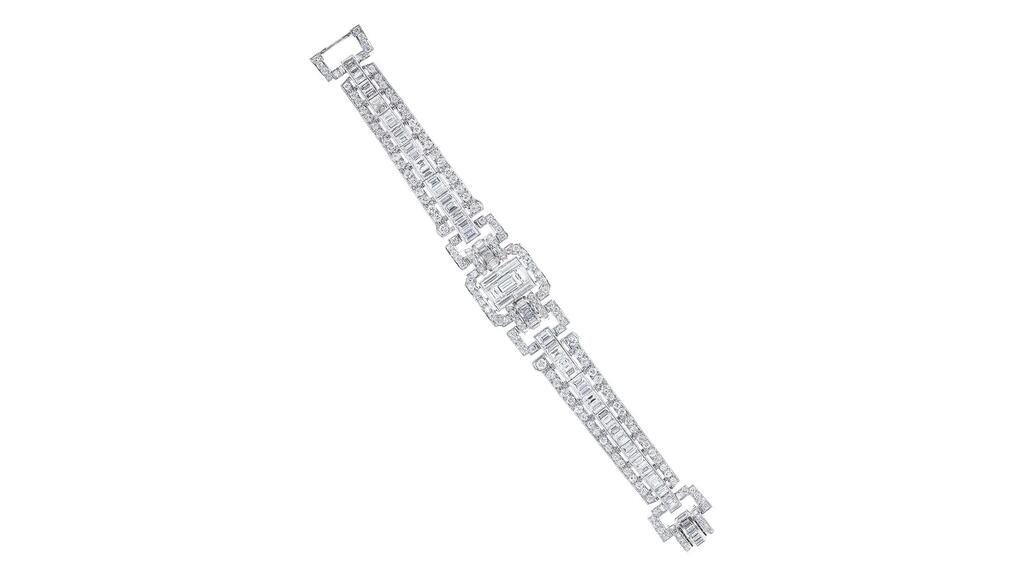
The underlying theme in all the trends of the last decade is that consumers are craving jewelry that tells a story, whether they create that story themselves or choose a piece imbued with one.
Vintage and antique pieces satisfy that craving and Art Deco is the style that has always prevailed.
“Art Deco will always be the most iconic, collectible, classic pieces of jewelry design ever,” Gizzi says. “The Art Deco movement changed jewelry forever, so that will always be the go-to.”
The movement has created and popularized classics that never go out of style, from diamond line bracelets (better known today as tennis bracelets) to emerald-cut gemstones.
Vintage has been such a big trend over the past 10 years because it offers uniqueness, with unsigned pieces in particular gaining interest among younger consumers. Noting the trend, Molofsky launched For Future Reference Vintage in 2024, a curated collection of unsigned vintage and estate jewelry.
Neyman attributes the increased interest in vintage to the jewelry’s storytelling aspect and possibly to the popularity of thrifting.
“People are really desiring things that took time to make and fit into the [idea of] ‘I am only one of a certain number of people who have this piece of jewelry,’” says McNaughton.
This trend has seeped into the bridal market as well, with vintage diamond cuts expected to be one of the big engagement ring trends this year.
Two-tone jewelry is another trend within the vintage sphere that has come back. It was popular in the early 2000s and after about 20 years, it is starting to make its way into designs again.
Mixing cool and warm tones, such as white and yellow gold, opens opportunities for consumers to play with and style their entire jewelry box.
“We’ll see mixed metals returning more and more [as] designers want to stay creative and relevant, and it always helps to mix things up,” Molofsky says.
Lower prices add to the appeal of vintage pieces, but the styles also have a connection to the past.
“Different generations grew up and are about to wear [their] grandma’s or mom’s jewelry that was a lot of two-tone,” Gizzi says.
9. Bring on the Color
Color materializes in jewelry through materials like precious metals, finishes, enamel, and gemstones.
Throughout the last decade there was an appreciation for color and unusual gemstones, especially in the last few years.
“It has to do with jewelers really wanting to express themselves in new and innovative ways,” Neyman says. “There’s just this desire to be more experimental, to be more exploratory.”
Starting around 2017, more designers began utilizing the entire spectrum of hues sapphire offers, no longer limiting themselves to the traditional blue.
Sphene and peridot also are now popular choices, appreciated for the unique color they bring to a piece.
Gizzi highlights spinel as one of the gemstone icons of the decade, noting that she now regularly sees huge, gorgeous spinels at the AGTA show in Tucson.
The most desired hue for each type of gemstone also changed throughout the decade.
With tourmaline, it was all about the classic pink and green of a watermelon tourmaline in early 2015, 2016. Today, minty-colored tourmalines are trending.
Adding color through enamel was another trend that resurfaced from previous decades.
It not only gave designers more room to experiment, like Melissa Kaye with her neon enamel, but also is a less expensive way to add a pop of color to a piece, since enamel can be placed over silver rather than gold.
Bea Bongiasca is a perfect example of this. The Italian designer uses a large and bright range of colored enamel over silver while the metal that is visible is gold, creating collections that lean into fun and playful designs for the fine jewelry world.
“I’ve seen a combination of enamel and even different finishes on gold, like green gold or electroplating to give the gold a different color and feel in addition to a colored gemstone, to really make the piece pop. I do think people will experiment more,” McNaughton says.
She says Gen Z consumers, fueled by ‘90s and Y2K nostalgia, want more playful, colorful, and unconventional materials in their fine jewelry.
10. Fine Jewelry for Everyone
Wearing pieces despite the gender traditionally associated with their design elements became more normalized in the past decade. There are no longer strict rules about what is "men's jewelry" or "women's jewelry;" it's about just wearing what you like.
Unisex styles are increasingly common, more designers are adding men’s lines, and masculine consumers are experimenting with their jewelry style more so now than at any point in modern history.
“Men in general have become bolder with their jewelry choices, and not just wearing brooches on the red carpet but every day,” Neyman says.
“It goes back to being unapologetically who you are; men are wearing pieces that might have once been reserved traditionally for women.”
The everyday consumer can look to brands like Tabayer, Sylvie Jewelry, Lagos, State Property, John Hardy, and Gabriel & Co. for modern masculine designs.
David Yurman introduced a high jewelry collection for men in 2024, and Pharrell Williams’ latest collection with Tiffany & Co. is built around Tahitian pearls set in rose gold—elements traditionally associated with femininity.
From diamond Cuban link chains to pearl pieces and layered looks, men’s options have expanded beyond a watch and their wedding band, and they are embracing it, emboldened by the widening sphere of men who are wearing jewelry.
Former Atlanta Braves outfielder Joc Pederson was spotted wearing a pearl necklace throughout the World Series in 2021, and sprinter Noah Lyles sported a chunky, multicolored mariner link diamond choker while winning gold in the men’s 100-meter final at the 2024 Paris Olympics.
Notable athletes daring to wear pieces commonly seen as predominately feminine gave the men of the world permission to wear what they wanted, says Gizzi.
“They’re being more expressive with the pieces they pick and how there are no gender roles. It’s like, ‘This is what I like, and this is what I’m going to wear.’”
The Latest

The filmmaker’s personal F.P. Journe “FFC” prototype was the star of Phillips’ recent record-setting watch auction in New York.

The new location in the Design District pays homage to Miami’s Art Deco heritage and its connection to the ocean.

Inflations, tariffs, and politics—including the government shutdown—were among consumers’ top concerns last month.

How Jewelers of America’s 20 Under 40 are leading to ensure a brighter future for the jewelry industry.

“Longtime favorite” presenters, as well as first-time speakers, will lead talks and workshops at the annual event in Tucson next year.


Silas Smith of Meridian Metalworks won the challenge with his pendant that blends Australian and American landscapes.

The sale of the 31.68-carat, sunset-hued stone was part of Sotheby’s first series of events and auctions in Abu Dhabi.

Roseco’s 704-page catalog showcases new lab-grown diamonds, findings, tools & more—available in print or interactive digital editions.

Most customers who walk into your store this month have made up their minds. Your job is to validate their choice, Emmanuel Raheb writes.

MatrixGold 3.11, the newest version of the jewelry design program, offers more flexibility, precision, and creative control.

The pavilion will be part of the 2026 JA New York Spring show, scheduled for March 15 to 17.

Kadet, a 1994 National Jeweler Retailer Hall of Fame inductee, helped grow the family-owned retailer in the Chicago area and beyond.

Billed as the world’s smallest wearable, Lumia Health’s new smart earrings have a health tracker subtly embedded in the back.

The new pink sapphire version of the piece dances with its wearer in the brand’s “Icons After Dark” holiday campaign.

A choice that’s generated a lot of commentary, Pantone says “Cloud Dancer” marks a fresh start and encourages relaxation and creativity.

The manufacturer’s holiday campaign features a gift guide filled with trending designs and jewelry that can be personalized.

The man was charged with theft, accused of ingesting the necklace while in a jewelry store in Auckland, New Zealand.

The Florida independent expanded its store from 8,000 to 14,000 square feet, fulfilling the vision of its late co-founder, Jim Dunn.
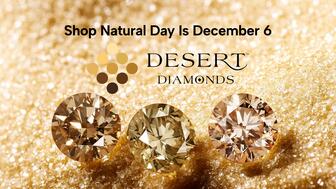
Sponsored by De Beers Group
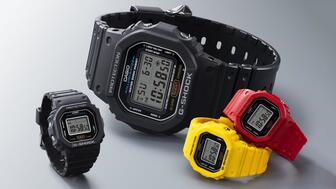
The classic 5600 series G-Shock has been scaled down to about a tenth of its size, becoming a fully functioning watch ring.

The association’s annual conference and gala will take place Feb. 4, 2026, during the Tucson gem shows.
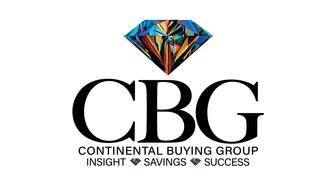
The January show will include a workshop for jewelry retailers on implementing AI to strengthen their businesses.
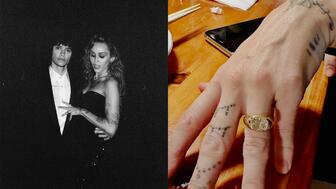
Fellow musician Maxx Morando proposed to the star with a chunky, cushion-cut diamond ring designed by Jacquie Aiche.

The retailer, which sells billions in fine jewelry and watches, is suing the Trump administration and U.S. Customs and Border Patrol.

Black Friday is still the most popular shopping day over the five-day holiday weekend, as per the National Retail Federation’s survey.
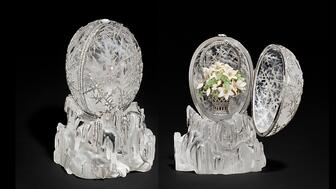
The historic egg, crafted for Russia's ruling family prior to the revolution, was the star of Christie’s recent auction of works by Fabergé.
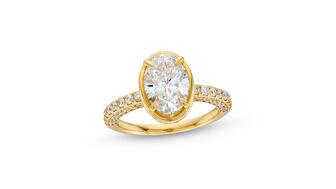
The retailer offered more fashion jewelry priced under $1,000, including lab-grown diamond and men’s jewelry.











